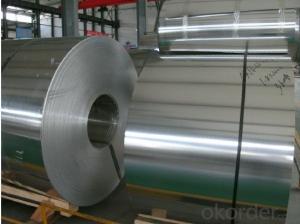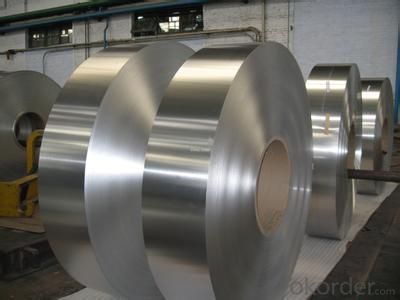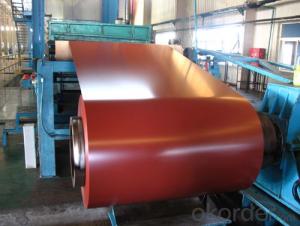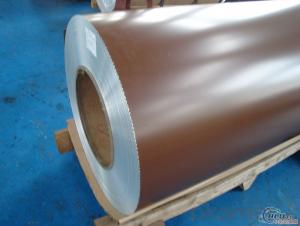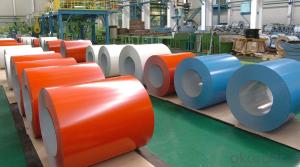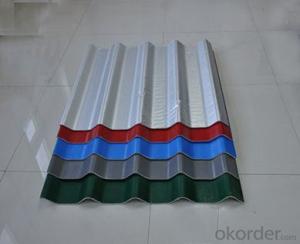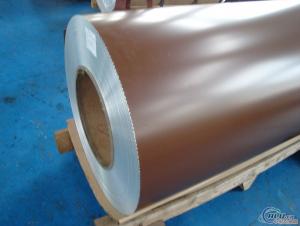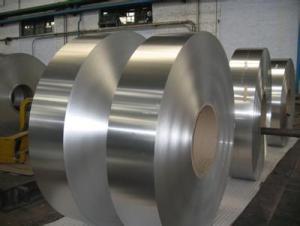Polyester Coated Roof Aluminum Sheets - Decorative Wall Aluminium Coils
- Loading Port:
- Shanghai
- Payment Terms:
- TT OR LC
- Min Order Qty:
- 5 m.t.
- Supply Capability:
- 50000 m.t./month
OKorder Service Pledge
OKorder Financial Service
You Might Also Like
Specification
1.Structure of Aluminium Coils for Decoration Wall with Polyester Coating
Aluminium Coils for Decoration Wall with Polyester Coatingis one semi-finished aluminium material. The coils are widly used in the building,decoration and aluminium circle. The alloy AA5052 is the most common alloy in the aluminium industry. Its weight is much lower than steel. So many customers choosed aluminium material instead of steel.
2. Main features of Aluminium Coils for Decoration Wall with Polyester Coating
a.Competitive price---We have our own mills and can produce mill finished aluminium coils, so we can control the production cost better.
b.Professional after-sale service---We have more than 15 years exportation experience and you need not worry about the exporation problems.
c.Fast delivery time---We can control the delivery time within 35 days.
3. Image of Aluminium Coils for Decoration Wall with Polyester Coating
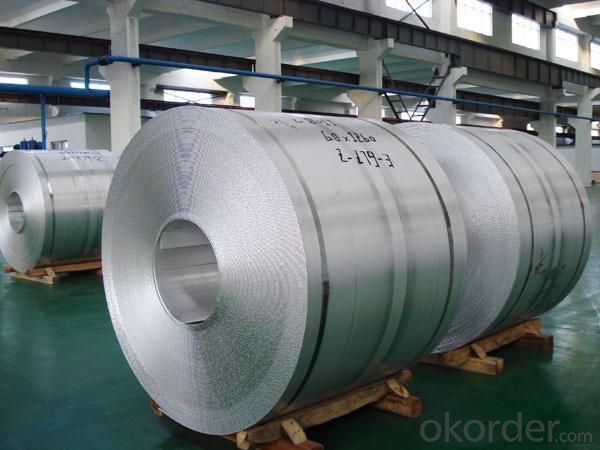
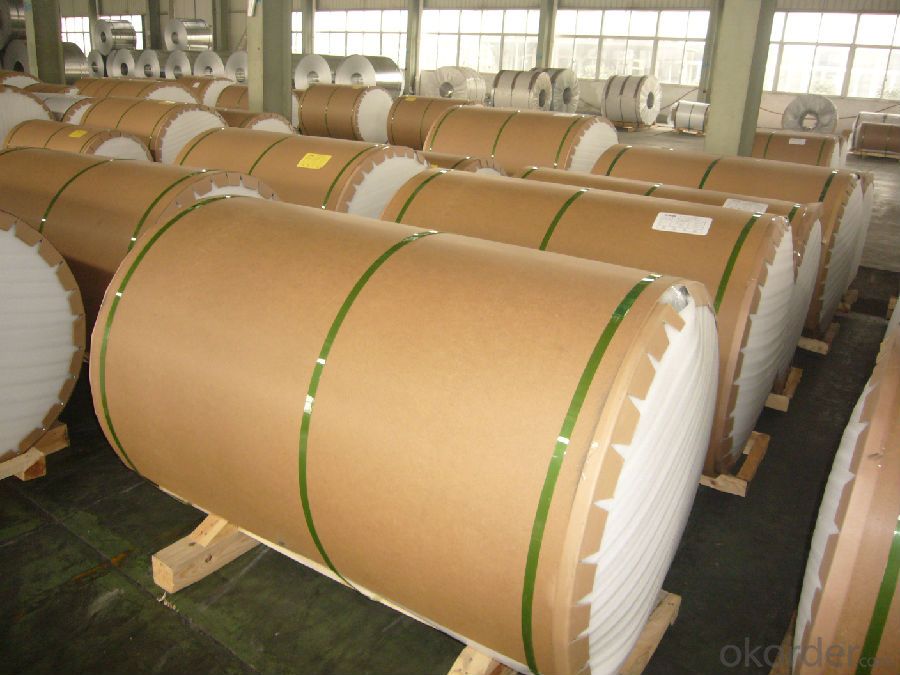
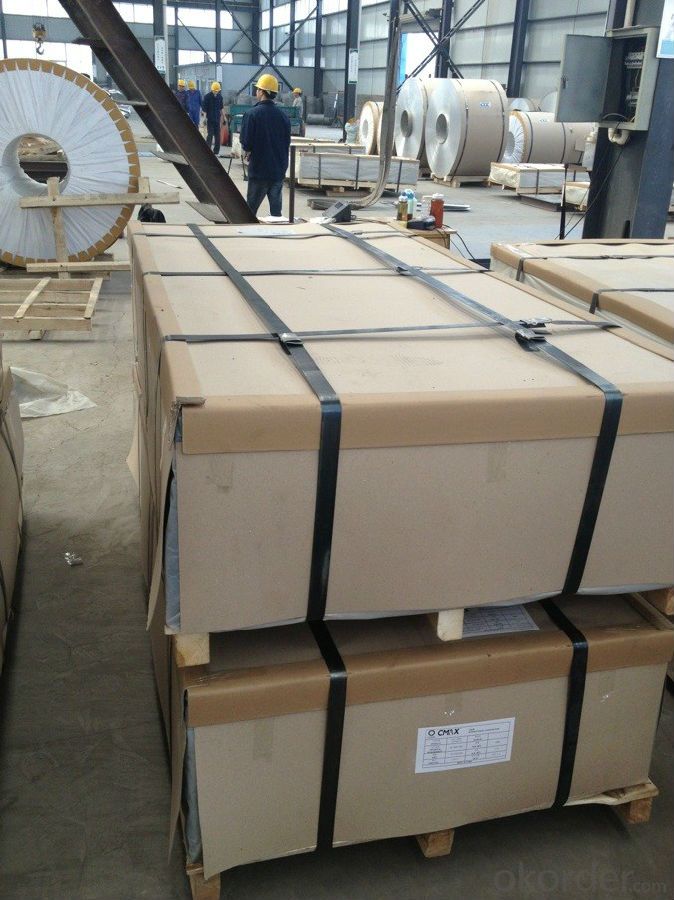
4. Product Specification
| Alloy | Temper | Thickness | Width | Weight |
| AA1100 | HO | 0.2MM-3MM | 1000-1500MM | Max 3 tons |
5.FAQ:
What is the quality standard?
---Usually our standard is GB3880-2006
What is the largest width?
---It is 2300mm
What is the MOQ?
---Usually we can accept 80 tons.
- Q: Are 101 aluminum sheets suitable for decorative purposes?
- Yes, 101 aluminum sheets are suitable for decorative purposes. These sheets are made of high-quality aluminum alloy, which provides a sleek and polished appearance. They have excellent corrosion resistance and are easy to clean, making them ideal for use in decorative applications. Additionally, 101 aluminum sheets can be easily cut and shaped, allowing for creative designs and customization. Whether it's for interior or exterior decoration, these sheets can be used for various purposes such as wall cladding, signage, furniture accents, and more. With their durability and aesthetic appeal, 101 aluminum sheets are a great choice for adding a touch of elegance to any space.
- Q: What are the different methods of surface embossing aluminum sheets?
- There are several different methods of surface embossing aluminum sheets, each with its own unique process and outcome. Some of the most commonly used methods include: 1. Mechanical Embossing: This method involves using mechanical tools, such as rollers or presses, to create patterns or designs on the surface of the aluminum sheet. The sheet is passed through the rollers or pressed against a patterned surface, which impresses the design onto the metal. Mechanical embossing is often used for creating repetitive patterns, such as diamond or checkerplate patterns. 2. Chemical Embossing: This technique involves using chemical etching or engraving to create patterns on the aluminum sheet. A chemical solution is applied to the surface of the metal, which selectively etches away the desired areas, leaving behind the embossed pattern. Chemical embossing allows for more intricate and detailed designs to be created on the aluminum sheet. 3. Heat Embossing: Heat embossing is a method that involves using heat to create embossed designs on the aluminum sheet. A heated die or stamp is pressed against the surface of the metal, causing it to deform and create the desired pattern. Heat embossing is commonly used for creating raised logos or text on aluminum sheets. 4. Laser Embossing: Laser embossing utilizes laser technology to create embossed designs on aluminum sheets. A laser beam is directed onto the surface of the metal, vaporizing or melting away the desired areas to create the embossed pattern. Laser embossing offers high precision and allows for the creation of intricate and complex designs. 5. Roll Embossing: Roll embossing is a method where the aluminum sheet is passed through a series of engraved rolls, which impress the desired pattern onto the metal. Each roll has a different pattern or design, allowing for a variety of embossed finishes to be achieved. Roll embossing is commonly used for creating textured or decorative finishes on aluminum sheets. Overall, the different methods of surface embossing aluminum sheets provide a range of options for creating unique and visually appealing designs. The choice of method depends on the desired outcome, complexity of the design, and the specific requirements of the project.
- Q: Can aluminum sheet be used for decorative purposes?
- Yes, aluminum sheet can be used for decorative purposes. Its lightweight nature, durability, and versatility make it a popular choice for various decorative applications such as signage, wall cladding, ceiling panels, furniture accents, and more. Additionally, aluminum sheets can be easily manipulated, painted, or coated to achieve different finishes, colors, and textures, allowing for endless possibilities in decorative design.
- Q: Are the aluminum sheets suitable for manufacturing transportation containers?
- Yes, aluminum sheets are suitable for manufacturing transportation containers. Aluminum is lightweight, durable, and corrosion-resistant, making it an ideal material for containers used in transportation. It offers high strength-to-weight ratio and can withstand harsh conditions, making it suitable for various modes of transportation such as trucks, trains, and ships. Additionally, aluminum is recyclable, making it an environmentally friendly choice for container manufacturing.
- Q: Can aluminum sheets be used for packaging applications?
- Yes, aluminum sheets can be used for packaging applications. Aluminum is a lightweight, durable, and corrosion-resistant material, making it suitable for various packaging purposes such as food and beverage containers, pharmaceutical packaging, and cosmetic packaging. It provides a barrier against moisture, oxygen, and light, ensuring the protection and preservation of the packaged products. Additionally, aluminum is recyclable, contributing to sustainability efforts in the packaging industry.
- Q: What are the different surface finishes for aluminum sheets in the aerospace industry?
- In the aerospace industry, aluminum sheets are commonly used in the construction of aircraft structures due to their lightweight and high strength properties. To enhance their durability, protect against corrosion, and improve aesthetic appeal, various surface finishes can be applied to aluminum sheets. One of the most commonly used finishes is anodizing, which involves electrolytically coating the aluminum with a protective oxide layer. This process not only improves corrosion resistance but also provides a range of color options and enhances the sheet's ability to accept adhesives. Another popular finish is alclad, which involves bonding a thin layer of pure aluminum to both sides of an alloy sheet. This not only provides excellent corrosion resistance but also allows for better bonding with composite materials. In addition to anodizing and alclad, other surface finishes used in the aerospace industry include chemical conversion coatings, which provide corrosion resistance and improve paint adhesion, and mechanical finishes such as grinding or brushing, which can be used for aesthetic purposes or to prepare the surface for further treatment. Furthermore, some specialized finishes are employed for specific applications. For instance, in areas where high wear resistance is required, hard anodizing can be used to create a durable, wear-resistant surface. For parts that require low friction or high lubricity, a Teflon coating or dry film lubricant can be applied. The choice of surface finish for aluminum sheets in the aerospace industry depends on the specific requirements of the application, including factors such as corrosion resistance, adhesion properties, wear resistance, and aesthetic preferences.
- Q: What is the final concentration of aluminum cation?
- You have to be able to determine the number of moles of Al+3 that each solution contributes to the final solution: 1. aluminum chloride: AlCl3 Multiply the volume (in L) by the molarity to determine the number of moles of each compound dissolved in solution. 0.0431 L x 0.279 M = 0.0120 mol AlCl3 in solution When the AlCl3 in placed in the water, it dissociates to form the following ions: AlCl3 -- Al+3 + 3Cl- So for every one mole of AlCl3 placed in the water, one mole of aluminum ions will dissociate. Therefore, since we have 0.0120 mole of AlCl3 in the solution, that means that the aluminum chloride will contribute 0.0120 Al+3 ions to the final solution. 2. Aluminum sulfate: Al2(SO4)3 Multiply the volume (in L) by the molarity to determine the number of moles of each compound dissolved in solution. 0.0146 L x 0.464 M = 0.00677 mol Al2(SO4)3 in solution When the Al2(SO4)3 in placed in the water, it dissociates to form the following ions: Al2(SO4)3 -- 2Al+3 + 3(SO4)-2 So for every one mole of Al2(SO4)3 placed in the water, two mole of aluminum ions will dissociate. Use the mole ratios of the dissociation reaction to determine the number of moles of Al+3 ions that the aluminum sulfate contributes to the solution. 0.00677 mol Al2(SO4)3 x (2 mol Al+3 ions / 1 mol Al2(SO4)3) = 0.01354 mol Al+3 ions Therefore, the total number of Al+3 ions in solution is the sum: 0.01354 + 0.0120 = 0.02554 mol Al+3 ions The last piece of information needed to determine the concentration of the final solution is the volume of the final solution. Since the two volumes were mixed, the volume of the final solution will be the sum of the two solutions. 0.0431 L + 0.0146 L = 0.0577 L Therefore, to calculate molarity: Molarity = moles of solute / liters of solution Molarity = 0.02554 mol / 0.0577 L = 0.443 M Al+3
- Q: Are aluminum sheets suitable for pharmaceutical applications?
- Yes, aluminum sheets are suitable for pharmaceutical applications. Aluminum is a widely used material in the pharmaceutical industry due to its various beneficial properties. Firstly, aluminum sheets are lightweight and have excellent corrosion resistance. This makes them ideal for packaging pharmaceutical products as they can protect the contents from external factors such as moisture, light, and oxygen, which could potentially degrade the quality of the medication. Additionally, aluminum sheets can be easily formed into different shapes and sizes, allowing for customization in packaging design. They are also available in various thicknesses, providing options for different types of pharmaceutical products, from tablets and capsules to liquid medications. Furthermore, aluminum sheets have a high barrier property, effectively preventing the transfer of odors, flavors, and contaminants. This ensures the integrity and safety of the medication throughout its shelf life. Moreover, aluminum is a non-toxic material, which means it does not react with drugs or alter their composition. This makes it a suitable choice for pharmaceutical applications, where maintaining the purity and stability of the medication is crucial. In conclusion, aluminum sheets are highly suitable for pharmaceutical applications due to their lightweight, corrosion resistance, barrier properties, and non-toxic nature. They provide efficient protection and preservation of pharmaceutical products, ensuring their quality and safety.
- Q: I am ultimately looking to have a bike that is good for both everday commuting and touring with panniers/racks long distance with camping. From what I've read on the internet steel frames are more forgiving and ride smoother. The guy at my local bike shop tells me aluminum frames have more flex and ride better. I don't know if he's just trying to make a sale (Giant dealer) or to trust him, unfortunately the staff there are all just racers not tourers. If you can recommend any brands/models to check out that'd be good. From my research thus far I am in love with Co Motion bikes, just not the price! I'm looking at $1000 max for a good touring bike. Thanks!
- Surly LHT Surly Cross Check - suitable for lighter touring Soma Saga Salsa Fargo - heavy duty rig Salsa Casseroll - for light touring Kona Sutra - another mtb-based tourer Bob Jackson World Tour Nothing is as cheap as the nashbar alum frame. No reason to completely rule out aluminum options, though. Steel offers a nice ride, but frames made with nicer steel tubes are probably out of your price range. Aluminim can be plenty strong, especially if it's a hybrid-type frame. For example, Trek's 7.3 would be a fine platform for building a touring bike, yet the frame is aluminum...but plenty strong...and the quality of the frame will exceed an LHT. If you've got to have steel and don't have much funds available, even for a $450 frameset, consider sourcing an older (late-80s to mid-90s) rigid mtb. These had longer chainstays and wheelbases than modern mountain bikes, and the tubing and construction was naturally durable. Yeah, I see your point #2, but if wishes were horses...
- Q: Are aluminum sheets suitable for decorative lighting fixtures?
- Aluminum sheets are indeed a fantastic option for embellishing lighting fixtures. This material, known for its lightweight and versatility, can be effortlessly fashioned into diverse shapes and designs. Moreover, aluminum boasts exceptional resistance against corrosion, rendering it fitting for both indoor and outdoor lighting fixtures. Furthermore, aluminum can be conveniently coated or painted to achieve diverse finishes, offering limitless design prospects. Additionally, its reflective qualities enhance the overall lighting effect, making it an ideal preference for decorative lighting fixtures.
Send your message to us
Polyester Coated Roof Aluminum Sheets - Decorative Wall Aluminium Coils
- Loading Port:
- Shanghai
- Payment Terms:
- TT OR LC
- Min Order Qty:
- 5 m.t.
- Supply Capability:
- 50000 m.t./month
OKorder Service Pledge
OKorder Financial Service
Similar products
Hot products
Hot Searches
Related keywords
